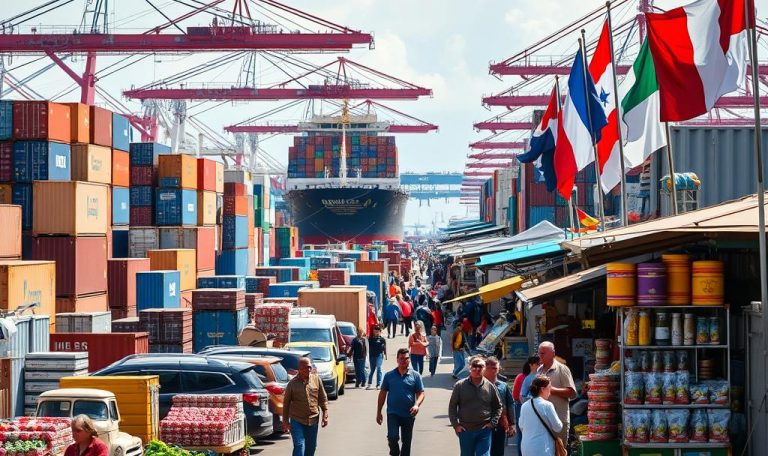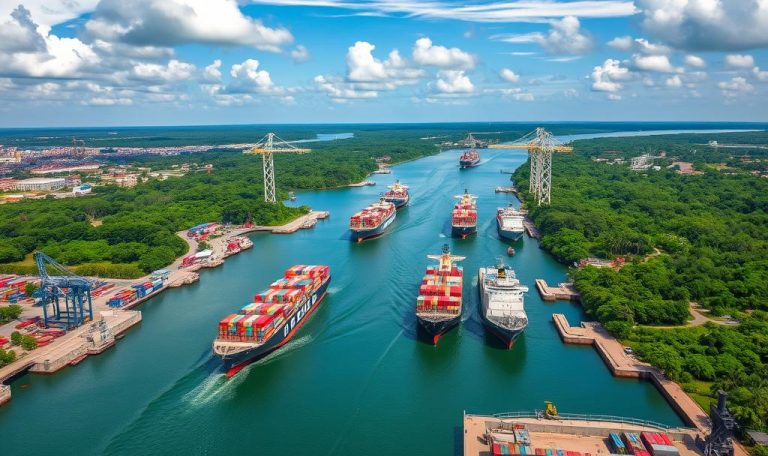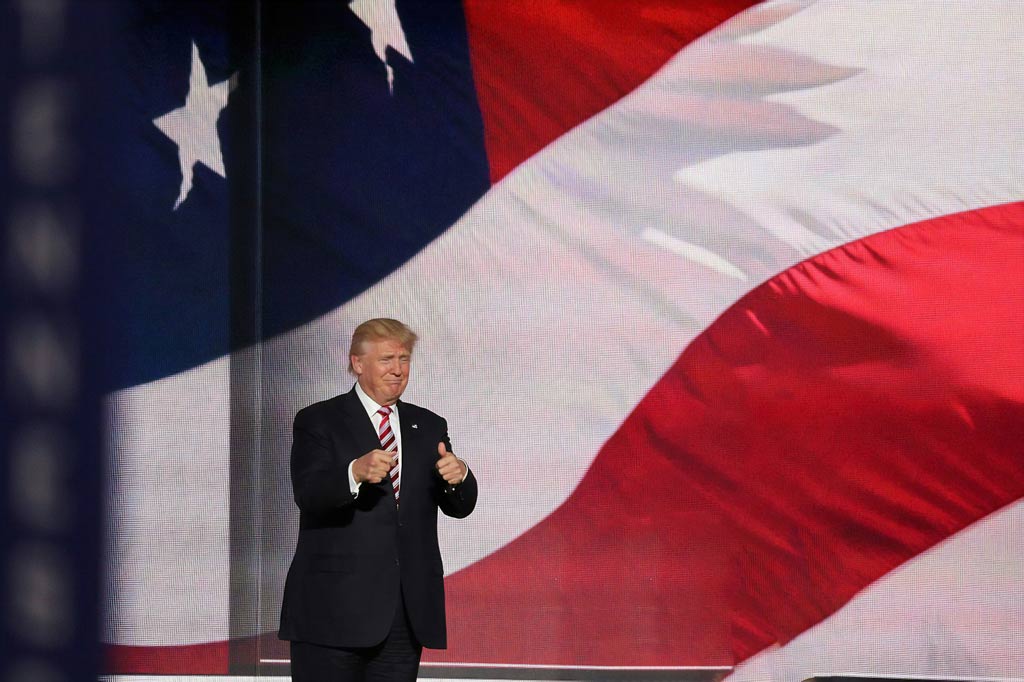Donald Trump’s presidency has changed global trade policies a lot. Panama, a key spot for international trade, felt these changes. Trump suggested tariffs from 10% to 20% on imports. He even wanted to charge China 40-60% more, shaking up global trade.
For Panama, this change in U.S. trade policy brings both problems and chances. The Panama Canal, a major trade route, is key to Panama’s wealth. But Trump’s protectionist moves and trade fights with big players like China and the EU could hurt the canal’s income and Panama’s logistics.
Key Takeaways
- Trump’s proposed tariffs on imports, especially for China, have changed global trade and Panama’s economy.
- The Panama Canal, a vital trade route, might see its income and logistics sector affected by these policy shifts.
- Trump’s way of doing trade could lead to better deals for Panama-U.S. trade, though.
- Panamanians need to deal with the Trump administration’s policies while looking for ways to grow in global trade.
- It’s important for businesses and leaders in Panama to keep up with U.S. trade policy changes and their effects on the economy.
Understanding Trump’s Trade Policy Shift and Its Global Implications
President Trump’s trade policy has started big talks worldwide. His team is looking at import duties, trade agreements, and fighting trade barriers and protectionism. This could change how the world trades.
Base Tariff Proposals and International Trade Impact
The Trump team wants to fix U.S. trade with other countries and groups. They’re focusing on China and the European Union, causing more trade fights. This could change how goods move from Asia to the U.S. East Coast.
This might also affect the Panama Canal’s traffic and money flow.
Trade Tensions with China and European Union
The new trade rules from Trump could make things more expensive for everyone. The U.S. wants to change trade deals and fix what they see as unfair. But China and the European Union are fighting back, making things worse.
“The potential disruption to global supply chains and the resulting impact on the flow of goods through the Panama Canal could be significant.”
Everyone around the world is watching these trade talks closely. The results could change trade agreements, trade barriers, and the global economy a lot.

Panama Canal: Trade Routes and Revenue Changes Under Trump Era
The Panama Canal is a key part of global trade. It might face challenges under the Trump administration. The growing trade tensions between the U.S. and China could change how much money the canal makes.
The panama canal connects the Atlantic and Pacific Oceans. It helps ships carry goods across the world. But, the trade war between the U.S. and China could slow down cargo through the canal. This might hurt its economic impacts.
Panama’s role as a global logistics hub could also change. Its free trade zones and other infrastructure might see shifts in trade. Panama needs to plan carefully to keep its important role in international trade.
“The Panama Canal’s revenue and trade routes are intrinsically linked to global economic dynamics. As the Trump administration’s policies continue to shape the international trade landscape, Panama must remain vigilant and adaptable to ensure the canal’s continued relevance and prosperity.”
Panama needs a smart and quick response to these changes. They aim to keep the panama canal as a key part of global trade.

Tariffs and Panama’s Trade Now with Trump
The U.S.-Panama Trade Promotion Treaty, signed in 2007 and effective from 2012, has boosted trade between the two countries. Exports from Panama to the U.S. have grown from $51,000 in 2013 to over $9 million in 2022. U.S. imports to Panama have nearly doubled, from $587 million in 2013 to over $1 billion in 2022.
Trade Promotion Treaty Evolution
The U.S.-Panama Trade Promotion Treaty has changed over time. It has adapted to new trade dynamics and the Trump administration’s policies. This agreement has been key in making trade agreements and international commerce between the two nations work. It has had big economic impacts on both sides.
Import-Export Value Changes Since 2012
Despite growth in some sectors, overall trade between Panama and the U.S. has declined. Panama’s exports to the U.S. fell from $160 million in 2012 to $121 million in 2022. This shows the challenges in trade agreements and international commerce.
Current Trade Statistics and Trends
Today, Panama trades most with China, Japan, and South Korea. The U.S., China, and Mexico are its main import sources. These changes in trade agreements and international commerce show the region’s economic shifts and strategic moves.
| Country | Exports from Panama (2022) | Imports to Panama (2022) |
|---|---|---|
| United States | $121 million | $1.1 billion |
| China | $2.3 billion | $791 million |
| Japan | $1.8 billion | $205 million |
| South Korea | $1.5 billion | $145 million |
| Mexico | $92 million | $618 million |
The changes in trade agreements and international commerce between Panama and the U.S. under Trump have had big economic impacts. The U.S.-Panama Trade Promotion Treaty has helped some sectors grow. But the overall trade scene keeps changing, showing the fast pace of global trade agreements and international commerce.
Panama’s Strategic Position in U.S. Trade Relations
Panama is a key player in U.S. nearshoring efforts, thanks to its location and trade infrastructure. It’s especially important for the semiconductor and electronic component supply chains. The country also has a chance to improve energy security and LNG distribution, offering exciting opportunities for collaboration with the U.S.
To make the most of these chances, Panama needs to set its trade policy for the next ten years. It should focus on areas where it can specialize and boost production efficiency. By using its location and trade agreements, Panama can become a top choice for U.S. companies looking to nearshore and streamline their supply chains.
The trade scene is changing, with shifts in global supply chains and trade agreements between Panama and the U.S. This makes Panama’s role in the region even more important. As both countries aim to strengthen their economic bonds, there’s a great chance to grow cooperation in areas like nearshoring, energy, and trade agreements. This could be a bright future for U.S.-Panama trade relations.



